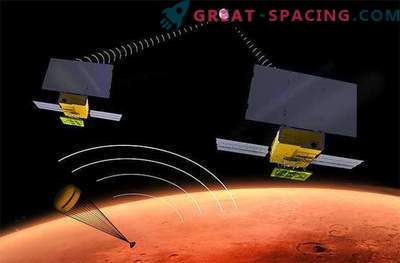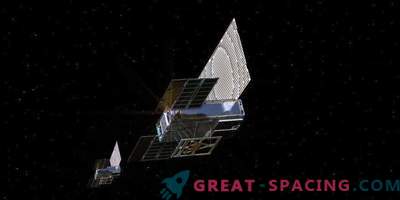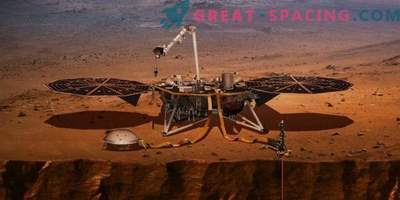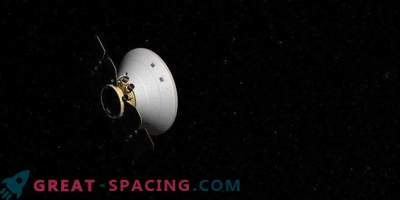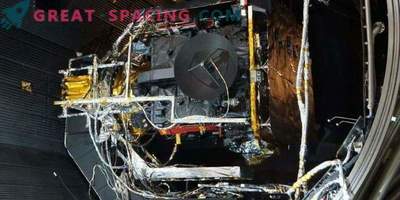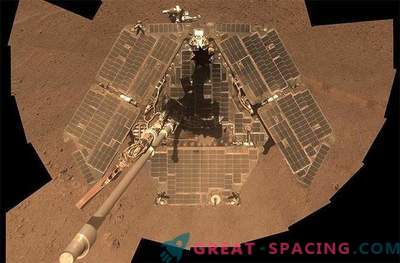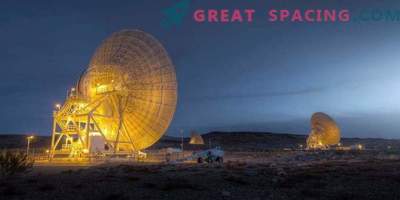
First shot taken by one of the Martian CubeSat - MarCO. On the image you can see a deployed antenna with a high gain CubeSat on the right, as well as the Earth and the Moon in the center. Image captured May 9
The NASA Voyager device acquired a classic portrait of the Earth from a distance of several billion miles in 1990. Now the class of tiny spacecraft like CubeSat managed to make its own version of the “pale blue dot”, capturing the Earth and the Moon in a single frame.
On May 8, NASA managed to set a new distance record for CubeSats, when a pair of satellites, named MarCo, drifted 1 million km from Earth. MarCo-B (also nicknamed Wall-E) used its fisheye camera to capture the first frame on May 9th. This snapshot is part of the process used by the engineering team to confirm that the high gain antenna of the spacecraft is properly deployed. As a bonus, the Earth and our satellite flashed in the picture.
The MarCO spacecraft is the first CubeSat ever released into deep space. Most of this type never leaves the Earth’s orbit. Usually they remain below 800 km above the planet. Originally created to teach students, but now they are a major commercial technology that provides information about everything (from delivery routes to environmental changes).
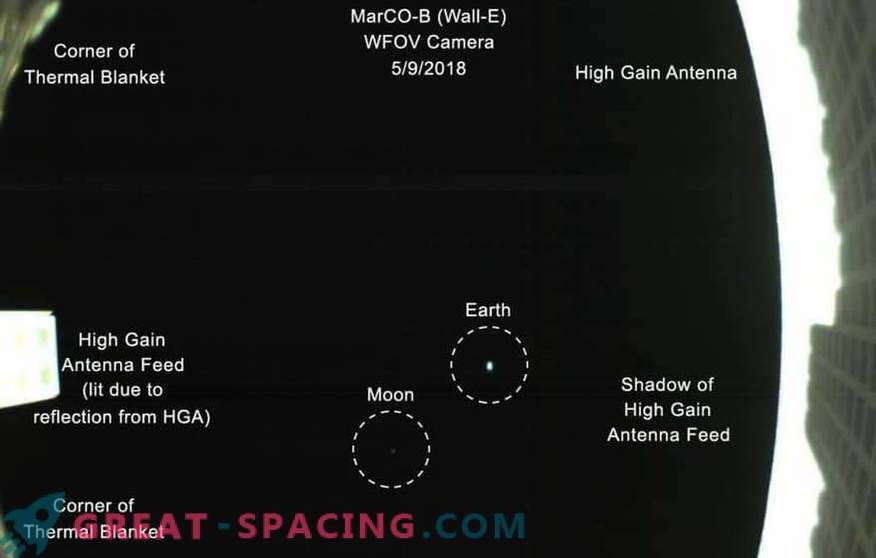
MarCO launched on May 5, along with NASA's InSight landing platform, a spacecraft that will land on Mars for the first time and explore the interior of the planet. Landing on Mars is a complex process due to the thin atmosphere of the Red Planet. If the devices get to Mars, they will transmit data about InSight when they enter the atmosphere and descend to the surface. High gain antennas are key for such manipulations.
The MarCo team has already confirmed successful antenna deployment, but testing will continue in the coming weeks. InSight will not rely on MarCO's mission to transfer data. This work is assigned to the NASA MRO orbiter. But MarCO can act as trackers and demonstrate a number of experimental technologies, including its antennas, radio receivers and propulsion systems.
Later, MarCO will attempt to perform the first maneuvers of trajectory correction. This will allow them to go to Mars.
